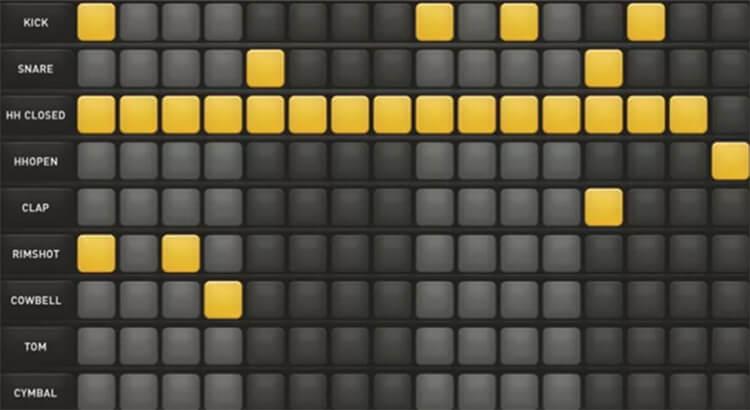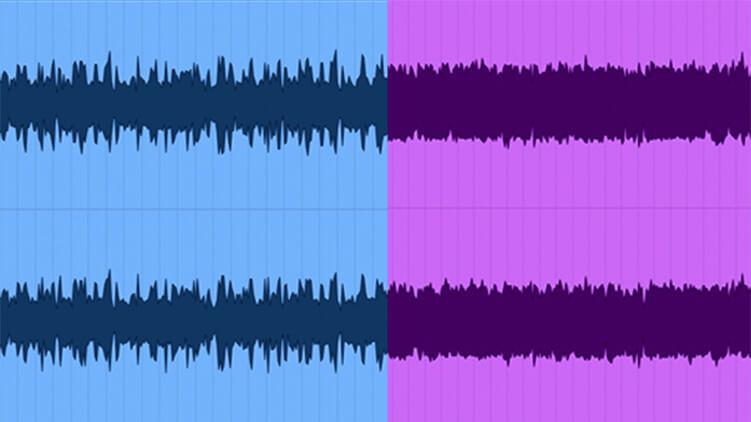Chromatic scale
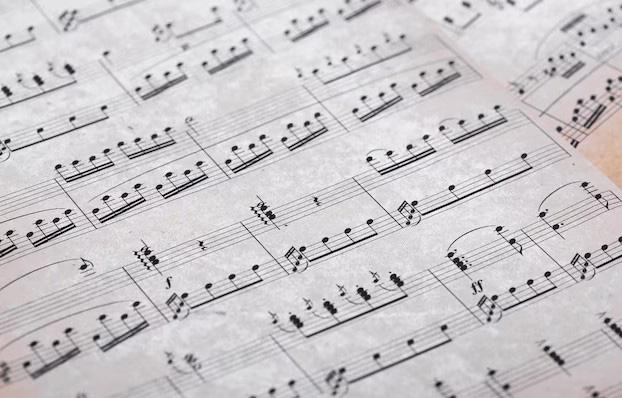
Scales, along with musical diatonic modes, not only help to understand the structure of music, but also contribute to the improvement of the musician’s skills. Understanding the structure and composition of scales allows for free improvisation in any key (after all, knowing the sounds in the scale, you will never miss), and also serves as a tool for developing the dexterity of the musician’s hands and fingers.Each scale is accompanied by explanations, diagrams, an indication of the composition of the incoming notes and intervals, which will help to transpose it into any key. Each scale is accompanied by an audio example that helps to catch the differences in the sound of various scales.From the point of view of musical theory, a scale is a scale that moves up or down at any length. The steps of the scale are always located at a certain distance from each other, making up a whole or semitone. Theoretically, the scale can be infinite, but in domestic musical practice, shorter versions are used – in one or several octaves. According to the principles of construction, scales are divided into two main types: major and minor. Regardless of the key and form of the scale (natural, harmonic), the distance between sounds in diatonic scales usually corresponds to the following schemes:
- For a major scale – tone, tone, semitone, tone, tone, tone, semitone;
The principle of the arrangement of sounds in a major
- For the minor scale – tone, semitone, tone, tone, semitone, tone, tone;
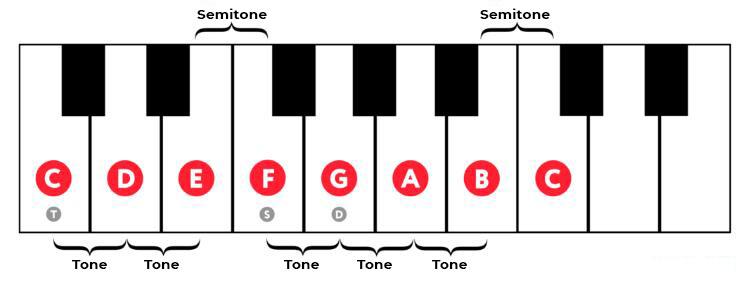
The principle of arranging sounds in a minor scale
There is also a third, special type of scales – chromatic scales, in which the distance between sounds is always half a tone.
The principle of the arrangement of sounds in the chromatic scale
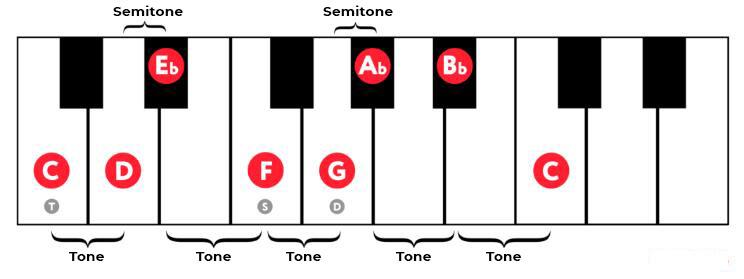
Chromatic scales
Chromatic scales are easy to learn – the interval between sounds is half a tone, and the scale itself is formed on the basis of a major or minor scale. In this case, gamma can move both up (ascending gamma) and down (descending gamma).
Ascending chromatic scale C
Chromatic scale C (C), ascending
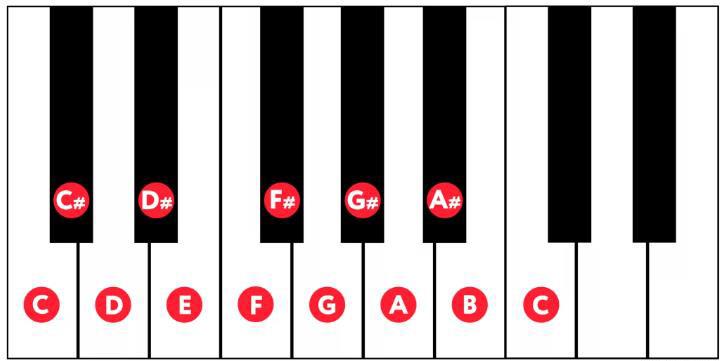
In an ascending chromatic scale, the scale moves upward, and the scale includes all sounds (tones and semitones) within the octave.
Structure of the chromatic ascending scale
- C;
- C sharp;
- Re;
- D sharp;
- Mi;
- Fa;
- F sharp;
- Salt;
- G sharp;
- A;
- A sharp;
- Si;
- C.
Descending chromatic scale C
Chromatic scale C (C), descending
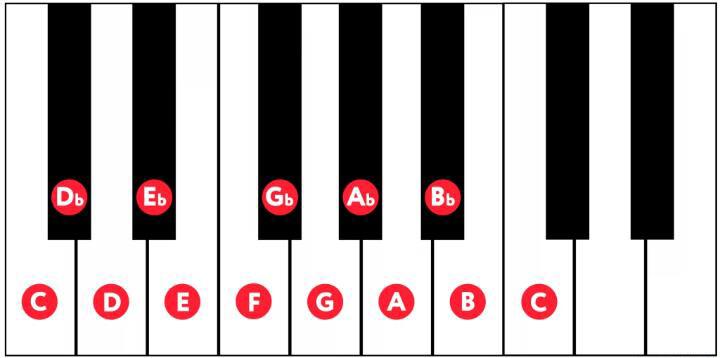
A descending scale also involves all sounds within an octave (two, three, or however many more octaves), but the movement is downward.
Structure of the chromatic descending scale C
- C;
- Si;
- B-flat;
- A;
- A-flat;
- Salt;
- G flat;
- Fa;
- Mi;
- E-flat;
- Re;
- D-flat;
- C.
Natural diatonic scales for piano and keyboards
Unlike chromatic scales, built on semitones, diatonic scales alternate 2-3 whole tones with semitones and always consist of seven steps (seven sounds + final sound).
Natural major / Natural scale C major (Ionian mode)
C major scale (Ionian mode)

The fundamental scale of seven notes, familiar to everyone since childhood. All musical theory is built around the natural major scale.
It sounds easy and fun thanks to the major triads included in it.
Construction principle
Tone, tone, semitone, tone, tone, tone, semitone
Major scale structure
- C – tonic (I degree, fundamental tone of the scale);
- D – descending introductory sound (II degree);
- E – mediant (III degree);
- F – subdominant (IV stage);
- G – dominant (V degree);
- A – submediant (VI degree);
- B – ascending introductory sound (VII degree).
Natural minor / Natural scale C minor (Aeolian mode)
C minor scale (Aeolian mode)
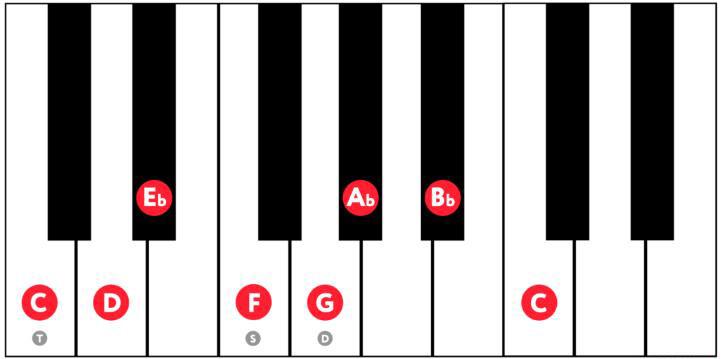
Among the three varieties of minor scales, the Aeolian mode (natural minor) is the most common. Its peculiarity is the inclusion of minor triads, which gives the sound of the minor scale a characteristic sadness and dark shade.
Construction principle
- Tone, semitone, tone, tone, semitone, tone, tone;
- Structure of the natural minor scale;
- C – tonic (I degree, fundamental tone of the scale);
- D – descending introductory sound (II degree);
- Eb – mediant (lowered III degree);
- F – subdominant (IV stage);
- G – dominant (V degree);
- Ab – submediant (lowered VI degree);
- Bb – an ascending introductory sound (lowered VII degree).
Harmonic scales
Harmonic major / Harmonic scale C major
C major scale, harmonic
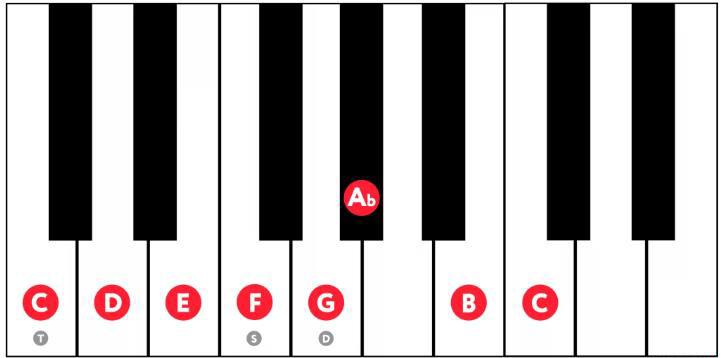
The major harmonic mode is a variation of the natural major scale, where the sixth degree is lowered (A-flat). This change allows the major scale to use intervals similar to the minor ones.
Construction principle
Tone, tone, semitone, tone, semitone, sesquitone, semitone
Major scale structure
- C – tonic (I degree, fundamental tone of the scale);
- D – descending introductory sound (II degree);
- E – mediant (III degree);
- F – subdominant (IV stage);
- G – dominant (V degree);
- Ab – submediant (lowered VI degree);
- B – ascending introductory sound (VII degree).
Harmonic minor / Harmonic scale C minor
Scale C minor, harmonic
The major-minor scale is a variant of the minor scale with a raised seventh degree (note B). This addition of a raised seventh degree gives the harmonic minor a special sonorous tint, making its sound brighter and more expressive. This technique also allows you to embed intervals characteristic of a minor key into the major mode, which gives the music a more interesting sound and harmonic variety.
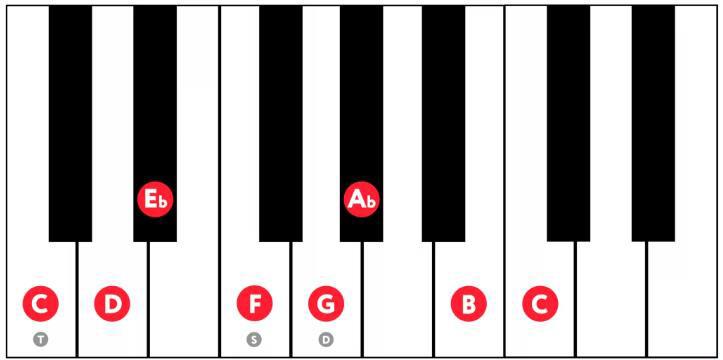
Major minor is a variation of natural minor where the seventh degree is raised (the note B). This rise of the 7th degree creates the feeling of an introductory tone and opens up the possibility of incorporating major intervals into minor keys. This musical technique gives minor melodies a lighter and brighter character, enriching their sound with additional harmonies.
Construction principle
Tone, semitone, tone, tone, semitone, sesquitone, semitone.
Structure of the harmonic minor scale
- C – tonic (I degree, fundamental tone of the scale);
- D – descending introductory sound (II degree);
- Eb – mediant (lowered III degree);
- F – subdominant (IV stage);
- G – dominant (V degree);
- Ab – submediant (lowered VI degree);
- B – ascending introductory sound (VII degree).
Melodic scales
Melodic scales
Melodic major / Melodic scale C major
Scale C major, melodic
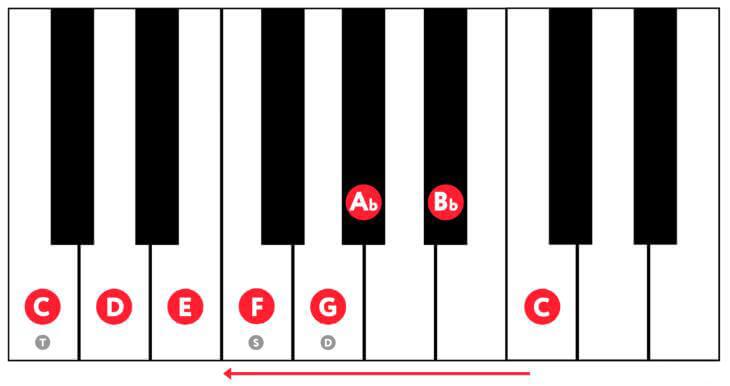
Melodic major is a rare variant of natural major, characterized in that the sound of the scale changes depending on the direction of movement. If you listen to melodic major on its own, it resembles natural minor.
The full version of melodic major involves sequentially playing an ascending and descending scale. When moving up, the musician plays natural major, and when moving down, he lowers the sixth and seventh degrees of natural major. Thus, melodic major can only be played by moving the scale down.
Construction principle
Tone, tone, semitone, tone, semitone, tone, tone.
Structure of the natural minor scale
- C – tonic (I degree, fundamental tone of the scale);
- D – descending introductory sound (II degree);
- E – mediant (III degree);
- F – subdominant (IV stage);
- G – dominant (V degree);
- Ab – submediant (lowered VI degree);
- Bb – an ascending introductory sound (lowered VII degree).
Melodic minor / Melodic scale C minor
Scale C minor, melodic
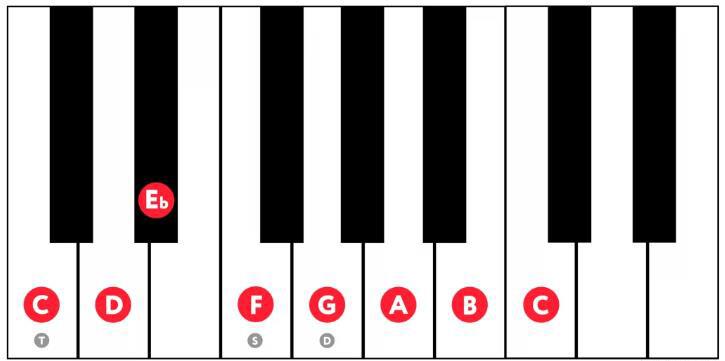
Like its major version, melodic minor changes its character depending on the direction in which the scale moves.
It is also called jazz minor. In the full version of the melodic minor, when moving up, the melodic minor is played, and when moving down, the natural minor is played.
Construction principle
Tone, semitone, tone, tone, tone, tone, semitone.
Structure of the melodic minor scale
- C – tonic (I degree, fundamental tone of the scale);
- D – descending introductory sound (II degree);
- Eb – mediant (lowered III degree);
- F – subdominant (IV stage);
- G – dominant (V degree);
- A – submediant (VI degree);
- B – ascending introductory sound (VII degree).
Pentatonic scales
Pentatonic major / Pentatonic scale C major
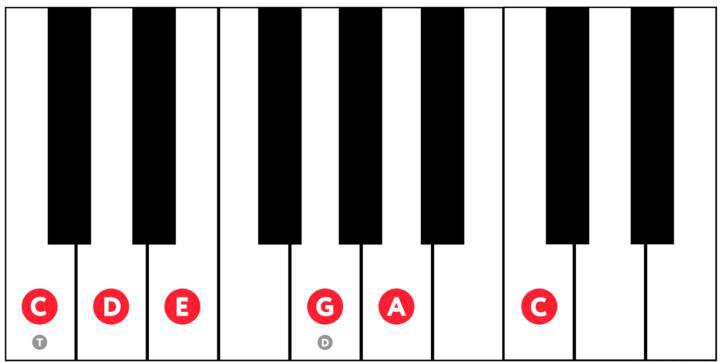
The major pentatonic scale consists of all sounds of the natural major scale, with the exception of degrees IV and VII.
Construction principle
One and a half tone, tone, tone, one and a half tone, tone.
Structure of the pentatonic major scale.
- C – tonic (I degree, fundamental tone of the scale);
- D – descending introductory sound (II degree);
- E – mediant (III degree);
- E – mediant (III degree);
- A – submediant (VI degree).
Pentatonic minor / Pentatonic scale C minor
Pentatonic scale C minor

The minor pentatonic scale is the natural C minor scale, from which the II and VI degrees have been removed.
Construction principle
- One and a half tone, tone, tone, one and a half tone, tone;
- Structure of the pentatonic minor scale;
- C – tonic (I degree, fundamental tone of the scale);
- Eb – mediant (lowered III degree);
- F – subdominant (IV stage);
- G – dominant (V degree);
- Bb – an ascending introductory sound (lowered VII degree).
Blues scales for piano and keyboards
Blues scale in C major
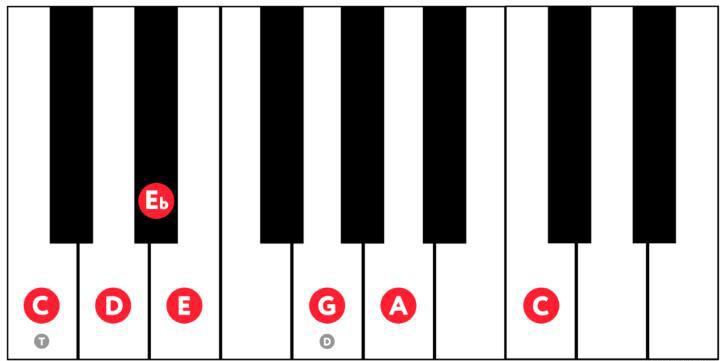
The blues major scale is a major pentatonic scale with additional sounds added.
Construction principle
One and a half tone, tone, half tone, half tone, one and a half tone, tone.
Major blues scale structure
- C – tonic (I degree, fundamental tone of the scale);
- D – descending introductory sound (II degree);
- Eb – mediant (lowered III degree);
- E – mediant (III degree);
- G – dominant (V degree);
- A – submediant (VI degree).
Blues scale in C minor
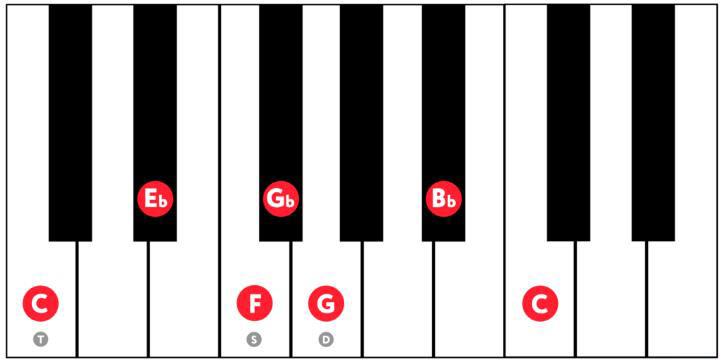
The minor blues scale is a variation of the minor pentatonic scale with a few extra notes added. This musical pattern is one of the most common choices for writing guitar solos and creating melodic lines.
The blues minor scale is widely used in blues, rock, metal and many other genres of music.
Construction principle
One and a half tone, tone, half tone, half tone, one and a half tone, tone.
Minor Blues Scale Structure
- C – tonic (I degree, fundamental tone of the scale);
- Eb – mediant (lowered III degree);
- F – subdominant (IV stage);
- Gb – dominant (lowered V degree);
- G – dominant (V degree);
- Bb – an ascending introductory sound (lowered VII degree). Diatonic modes of folk music.
In 1937, Soviet musicologist Yu.N. Tyulin introduced the term “diatonic modes of folk music” (or “natural modes”) to describe the features of scales inherent in traditional and folk melodies. However, outside of national practice, the term “folk music modes” or “natural modes” is not used, but instead the term “diatonic modes” is more often used.
Diatonic mode

This mode gets its name from one of the tribes that inhabited the region of Ancient Greece, known as the Dorians. The use of this mode was widespread in ancient and medieval music, and the ancient Greeks considered it a symbol of courage and severity. The Dorian mode is the second mode of the major scale. It is similar to natural minor, but contains an additional major VI degree (note A).
Construction principle
Tone, semitone, tone, tone, tone, semitone, tone.
Structure of the Dorian mode
- C – tonic (I stage, fundamental tone);
- D – descending introductory sound (II degree);
- Eb – mediant (lowered III degree);
- F – subdominant (IV stage);
- G – dominant (V degree);
- A – submediant (VI degree);
- Bb is an ascending introductory sound (lowered VII degree).
Phrygian mode

The Phrygian mode was also widely popular in antiquity and the Middle Ages. Unlike the Dorian mode, the Phrygian mode was seen by the ancient Greeks as associated with the god of wine Dionysus, giving it a quality of frivolity. This mode is the third mode of the major scale. Its dark shade is achieved through the halftone between the first and second steps.
Construction principle
Semitone, tone, tone, tone, semitone, tone, tone.
Structure of the Phrygian mode
- C – tonic (I degree, fundamental tone);
- Db – descending introductory sound (lowered II degree);
- Eb – mediant (lowered III degree);
- F – subdominant (IV stage);
- G – dominant (V degree);
- Ab – submediant (lowered VI degree);
- Bb – an ascending introductory sound (lowered VII degree).
Phrygian dominant mode
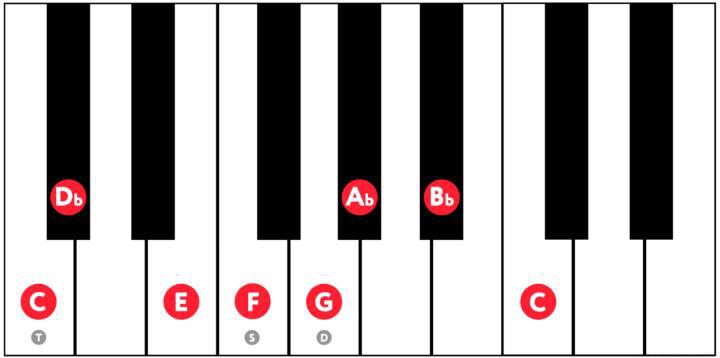
The Phrygian dominant mode is similar to the ordinary Phrygian mode, but the emphasis here is on the III degree. The sound is dark, even exotic.
Construction principle
Semitone, sesquitone, semitone, tone, semitone, tone.
Structure of the Phrygian dominant mode
- C – tonic (I degree, fundamental tone);
- Db – descending introductory sound (lowered II degree);
- E – mediant (III degree);
- F – subdominant (IV stage);
- G – dominant (V degree);
- Ab – submediant (lowered VI degree);
- Bb – an ascending introductory sound (lowered VII degree).
Lydian mode
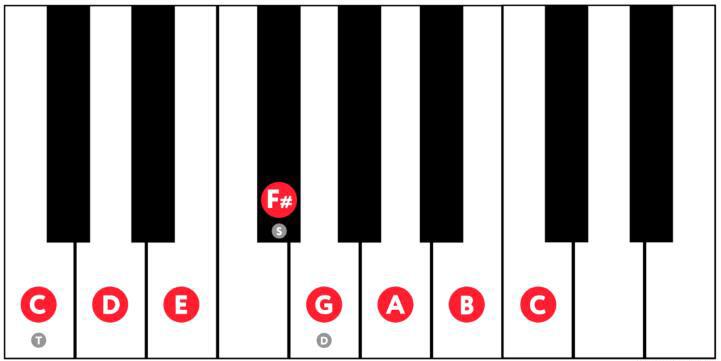
Construction principle
Tone, tone, tone, semitone, tone, tone, semitone.
Structure of the Lydian mode
- C – tonic (I degree, fundamental tone);
- D – descending introductory sound (II degree);
- E – mediant (III degree);
- F# – subdominant (lowered IV degree);
- G – dominant (V degree);
- A – submediant (VI degree);
- B – ascending introductory sound (VII degree).
Mixolydian mode
The fifth mode of the major scale, similar to the natural major scale. The difference lies in the use of the VII degree, which comes from the natural minor (note B-flat).
Construction principle
Tone, tone, semitone, tone, tone, semitone, tone.
Tone, tone, semitone, tone, tone, semitone, tone.
- C – tonic (I degree, fundamental tone);
- D – descending introductory sound (II degree);
- E – mediant (III degree);
- F – subdominant (IV stage);
- G – dominant (V degree);
- A – submediant (VI degree);
- Bb – an ascending introductory sound (lowered VII degree).
Locrian mode
Seventh mode of the major scale. The rarest mode, whose sound can not be called either major or minor. The uncertainty of the sound arises due to the V degree – the note G-flat.
Construction principle
Semitone, tone, tone, semitone, tone, tone.
Structure of the Locrian mode
- C – tonic (I degree, fundamental tone);
- Db – descending introductory sound (lowered II degree);
- Eb – mediant (lowered III degree);
- F – subdominant (IV stage);
- Gb – dominant (lowered V degree);
- Ab – submediant (lowered VI degree);
- Bb – an ascending introductory sound (lowered VII degree).

